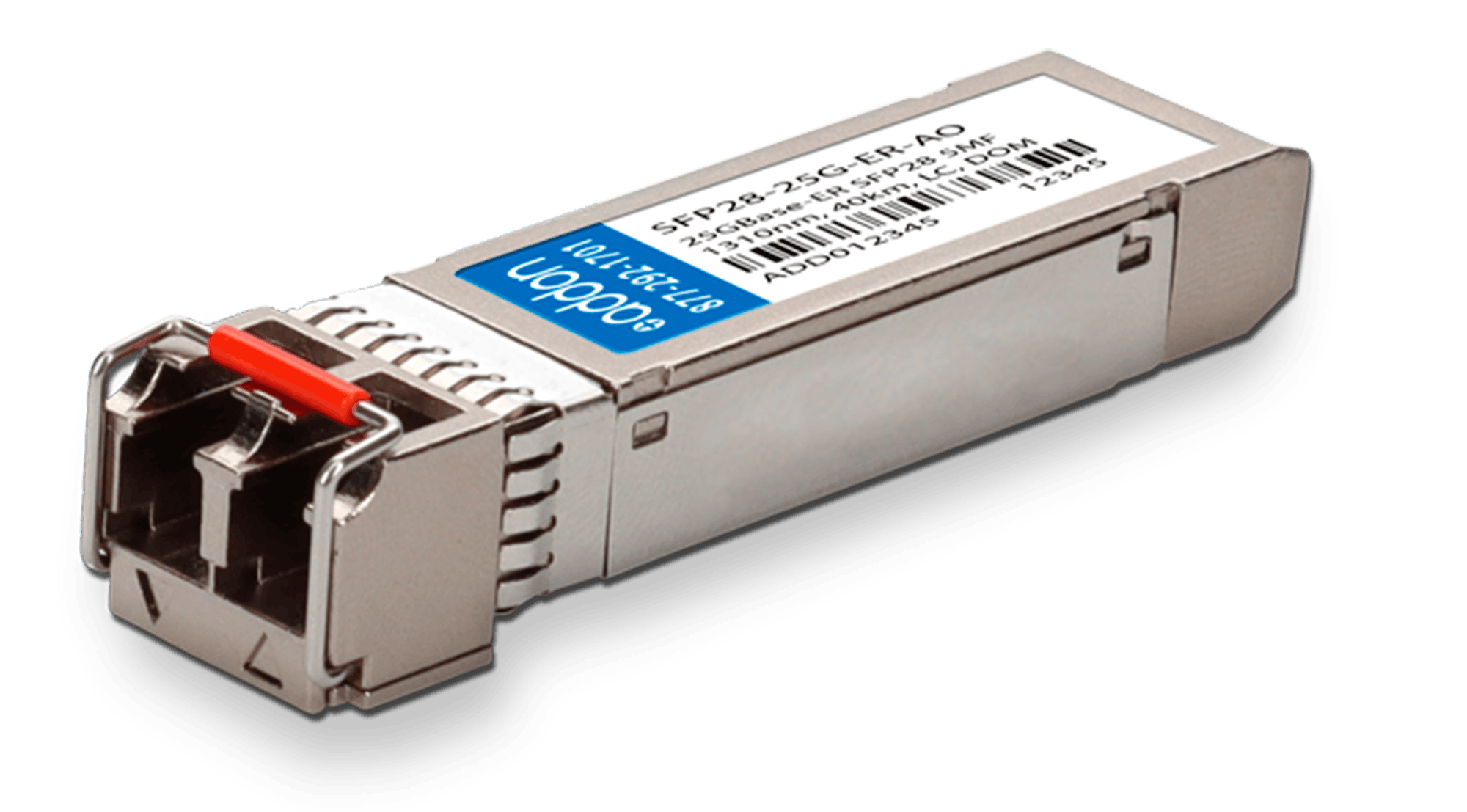25G Ethernet Overview
The 25G standard was created with the smallest pluggable modules, the SFP / SFP+. They are backward compatible with SFP ports and did not need to be reduced in size as technology improved.
When looking at wide-scale data center deployment, the design of 40G Ethernet is not space, power, or cost-effective when compared with 25G designs. The 25G single lane architecture supported re-use of the proven 1G and 10G SFP form factor pluggable modules for copper or fiber links. The 25G Ethernet optical module is referred to as SFP28 and has one lane that runs at 28Gbps. The QSFP28 (Q stands for quad) supports 100G and has 4 lanes of 25G that can be used for 100G connection between a single server port and a single switch port or 4 x 25G switch ports.

Usages
The demand for 25G Ethernet is typically from data center interconnects for storage, serves, and switches in addition to 5G front and midhaul applications. The SFP28 optic is the foundation for 25G and is available in standard unidirectional design, separate transmit (Tx) fiber, and for matching receiver (Rx) as well as BiDi designs where a single strand carries the TX and the RX signal. This makes 25G suitable for Point-to-Point and Point-to-Multipoint networks where fiber may be restricted. They can be used within PON or optical Ethernet networks using DWDM or CWDM, and are available to support industrial applications which need wide temperature ranges.

Benefits
Networks designed with 25G Ethernet optics are more efficient when upgrading existing networks or for greenfield networks. Benefits include:
- Lower cost per bit transmitted
- Reuse of existing server to switch cabling
- Lower power consumption than connectivity using 40G
- Higher switch faceplate density
- Greater throughput
- Efficient migration to 100G server connections
Cables
A key element of the 25G compatibility story is the cable that connects the optics. Recycling of existing cable infrastructure for data centers and the like reduces CapEx and supports straightforward upgrades from 10G and 40G connections. Cables for 25G have been specified by multi-source agreements and the IEEE for top-of-rack and end-of-row applications. The most commonly deployed are the twinax copper direct attach cable with a reach of 5 meters and the active optical cable that reaches 100 meters.
Conclusion
Shrewd definitions from the standard bodies mean 25G has a low power usage and is backward compatible with existing data center infrastructure while seamlessly matching 100G and higher data requirements. The environment for 25G includes optical modules, cables, switch ports, and NICs. Currently, there are 25G modules for most existing and impending applications. AddOn specializes in 25G optics for customers upgrading existing infrastructure and those building new networks.
